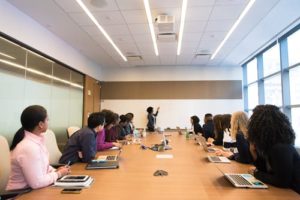Key Takeaways
- Creative onboarding ideas can significantly enhance employee engagement.
- Utilizing a mix of formal and informal activities can foster a positive workplace culture.
- Incorporating team-building exercises can create strong connections among new hires.
Introduction to Innovative Onboarding
Employee onboarding is a critical phase in integrating new hires into a company. Traditional methods might cover the basics, but to foster a genuinely engaged and motivated workforce, thinking outside the box is essential. Innovative onboarding ideas for new employees can turn their initial experience from ordinary to unforgettable, establishing the atmosphere for ongoing employee contentment and achievement. This process goes beyond the typical paperwork and office tours, aiming to create an impactful and enjoyable transition into the new work environment.
The Role of Creativity in Onboarding
Integrating creativity into onboarding programs not only makes the process more exciting but also aids in better retention of information. Engaging in onboarding experiences can increase job satisfaction and retention rates. Creative methods such as interactive workshops, digital scavenger hunts, and storytelling sessions can make learning enjoyable and memorable. These activities introduce new hires to the company’s culture and values and encourage them to participate and engage right from the start actively. For instance, an interactive workshop where new employees work together on a project related to their roles can help them understand their jobs better and establish connections with their peers.

Incorporating Informal Activities
While formal training sessions are essential, incorporating informal activities such as team lunches, ice-breakers, and social events can help new employees feel more comfortable and connected with their colleagues. These activities help to break down barriers and promote a sense of belonging. Such settings encourage open communication and ease the anxiety of starting a new job. For example, a team lunch on the first day can provide a relaxed atmosphere for new hires to interact with their teammates, learn about their roles, and understand the team dynamics. Ice-breaker activities, like sharing fun facts or participating in a light-hearted quiz, can make the onboarding experience more enjoyable and less intimidating.
Utilizing Technology for an Engaging Experience
Virtual reality (VR) and gamified learning platforms are being used to enhance the onboarding process for new hires. Companies are creating immersive and interactive experiences, such as virtual tours, role-playing scenarios, and digital badges for completing training modules. These technologies help remote employees feel connected to the physical workspace and motivate them to progress through the onboarding program actively. This creative use of technology transforms how companies engage and educate their employees.
The Impact of Personalized Onboarding
Customizing the onboarding process to suit new employees’ unique roles and interests can make them feel valued and understood. This can be achieved through tailoring training modules, providing role-specific resources, and personalizing welcome kits. Managers can create a lasting impression by recognizing new hires’ unique backgrounds and experiences. Conducting one-on-one meetings to discuss individual goals and expectations can also provide valuable insights and help managers tailor the onboarding experience to suit each new employee’s needs better.
Team-Building Exercises
Team-building exercises, such as collaborative projects, problem-solving challenges, and team outings, are crucial for new employees to build relationships and improve teamwork skills. These activities foster trust and cooperation among team members, promoting a harmonious work environment. A team-building retreat can encourage collaboration and communication while problem-solving challenges highlight individual strengths and promote mutual respect among team members.
Feedback and Continuous Improvement
Remember to gather feedback from new employees on their onboarding experience, which is crucial for continuous improvements. It is essential to regularly update and enhance the onboarding program based on this feedback to ensure that the process remains relevant and practical. Establishing a feedback loop where new hires can express their thoughts and recommendations can result in significant adjustments and improved experiences for future employees. For example, following the onboarding period, anonymous questionnaires or feedback sessions might yield important information about what went well and what needs improvement. Companies can showcase their dedication to developing a supportive and dynamic onboarding process by demonstrating that they value and take action on the feedback provided.

